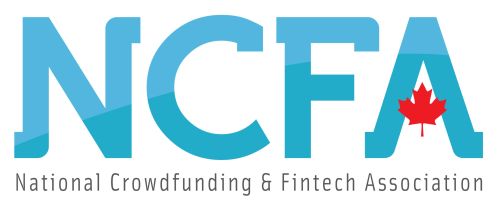Oct 12, 2023

 Image: Unsplash/Christina @ wocintechchat.com
Image: Unsplash/Christina @ wocintechchat.comWelcome to the exciting world of education in the digital age! Technology has swept through our lives, and it’s transforming the way we teach and learn. It’s not just about laptops and apps; it’s about a whole new way of educating our future generations.
In this guide, we’re going to take you on a journey into the realm of student technology integration. It’s like having a treasure map that leads to better learning experiences. We’re here to help educators, administrators, and everyone invested in education discover how to make the most of technology in the classroom.
We’ll explore what technology means to our “digital native” students – those youngsters who’ve grown up in a world filled with screens and gadgets. Understanding their needs and habits is a key part of this adventure.
But we won’t stop there. We’ll dive into the nitty-gritty of selecting the right tech tools, seamlessly blending them into your curriculum, and even finding ways to measure their impact. This guide is your trusty compass in the ever-expanding digital wilderness of education.
Remember, we’re not just talking about surviving – we’re talking about thriving. We’re not just handling crises; we’re shaping the future of education. So, buckle up as we embark on this journey to make learning more engaging, motivating, and in tune with the digital era.
Understanding the Digital Native Generation
Okay, let’s dive into what makes today’s students tick when it comes to technology. We’re talking about the digital natives, those youngsters who seem to have been born with smartphones in hand. Here’s the lowdown:
Characteristics of Digital Natives:
- Tech-Savvy: These guys and gals are like tech wizards. They can pick up a new gadget or app and figure it out in no time.
- Constant Connectivity: You know that feeling of needing to check your phone every few minutes? Well, digital natives practically invented it. They’re always plugged in, expecting instant access to information.
- Multitasking Masters: They’re the kings and queens of multitasking. While they’re doing homework, they might also be chatting with friends, streaming a video, and checking social media—all at once.
- Visual Learners: Forget heavy textbooks; digital natives prefer learning from visuals, like videos and images.
Interactions with Technology:
- Explorers: They learn by doing. Give them a new app or gadget, and they’ll happily dive in and figure things out on their own.
- Google Gurus: When they need information, they turn to the internet and Google. Libraries? That’s so last century.
- Team Players: Digital natives are all about online collaboration. Tools like Google Docs and social media are their go-to platforms for group projects.
- Quick Adapters: They’re like chameleons when it comes to technology. New updates and apps don’t faze them; they adapt lightning-fast.
So, as educators, understanding these digital native traits is crucial. It’s like speaking their language. Tailoring your teaching to their tech-savvy ways will make learning more engaging and relatable for them.
The Benefits of Student Technology Integration
The integration of technology into education is more than just introducing gadgets into the classroom; it’s about ushering in a transformation that enhances the learning experience. Here’s why it matters:
- Enhanced Engagement: Technology possesses an uncanny ability to captivate students’ attention and maintain their interest. It can turn learning into an exciting adventure, akin to their favorite video games, making education more enjoyable and participatory.
- Personalized Learning: With the right tech tools, educators can customize lessons to suit each student’s unique needs and pace. It’s akin to having a personal tutor for every student, fostering more effective and tailored learning experiences.
- Preparation for the Digital World: In today’s job market, digital skills are non-negotiable. By integrating technology into education, students acquire the skills they’ll need in their future careers, ensuring they step into the professional world well-prepared and confident.
- Immediate Feedback: Technology empowers educators to provide instant feedback to students. This real-time feedback mechanism helps students understand their strengths and areas that need improvement, fostering a culture of continuous growth and improvement.
- Collaboration Opportunities: Online platforms create opportunities for collaboration and communication skills development, which are vital not only for educational endeavors but also for success in future employment.
In summary, these benefits are just the beginning. Technology’s potential in education is vast, revolutionizing the way we learn and ensuring that education remains relevant and engaging in our increasingly digital world. It’s not just a tool; it’s a catalyst for transformation.
Selecting the Right Educational Technology Tools
Choosing the right educational technology tools is pivotal in the success of student technology integration. Here’s a concise guide:
Assess Student Needs: Understand your students’ age, proficiency, and learning styles to tailor your tool selection.
Define Educational Goals: Clearly state your objectives. Whether it’s boosting engagement, improving outcomes, or fostering collaboration, goals shape your choices.
Compatibility: Ensure chosen tools align with existing infrastructure to prevent compatibility issues.
Scalability and Budget: Consider scalability and long-term costs to fit your budget constraints.
Accessibility and Equity: Address accessibility for all students, regardless of their abilities or socio-economic background.
User-Friendliness: Opt for user-friendly tools to ease adoption among educators.
Quality and Reliability: Select tools from reputable providers with a history of effectiveness.
By involving educators, students, and IT specialists in the decision-making process, you can choose tools that align with your educational goals and facilitate successful integration into your curriculum. The right tools empower educators and students for success in the digital age.
Professional Development for Teachers
Empowering educators with the necessary skills and knowledge is fundamental to successful student technology integration. Here’s how to ensure teachers are equipped for the digital age:
Importance of Teacher Training: Professional development is vital to bridge the gap between technology adoption and effective use in the classroom.
Ongoing Support and Resources:
- Establish continuous learning opportunities, workshops, and mentorship programs.
- Provide access to up-to-date resources and materials.
Encourage Experimentation and Innovation:
- Foster a culture where teachers feel encouraged to experiment with technology.
- Recognize and celebrate innovative approaches to teaching.
Building a Community:
- Create a community of tech-savvy educators who can share experiences and best practices.
- Facilitate collaboration and knowledge-sharing among teachers.
When it comes to professional development for teachers, let’s focus on creating a friendly and collaborative atmosphere rather than seeking external college essay help service. Encouraging teachers to share ideas and resources among themselves not only builds a supportive community but also enhances their skills in guiding students through the process of creating term papers, and fostering a positive learning environment.
Assessing Impact and Overcoming Challenges
Assessing the impact of technology integration in education is crucial for improvement, but it’s equally important to navigate and overcome common challenges. Here’s how:
Measuring Student Outcomes:
- Evaluate changes in engagement, motivation, and academic performance.
- Track improvements in critical thinking and digital literacy skills.
Gathering Feedback:
- Collect input from students and educators through surveys and interviews.
- Consider qualitative data, like success stories and anecdotes.
Adjusting Strategies:
- Use assessment data to refine technology integration approaches.
- Adapt curriculum and teaching methods based on findings.
Celebrating Successes and Learning from Failures:
- Acknowledge and celebrate achievements from technology integration.
- Embrace failures as opportunities for growth and learning.
Overcoming Challenges:
- Address resistance to change among educators with training and support.
- Develop strategies for tackling technical issues promptly.
- Ensure equitable access to technology for all students.
- Establish guidelines for managing screen time and digital distractions.
This iterative process helps educators refine their approaches, create an engaging learning environment, and tackle hurdles that may arise.
Conclusion
In our ever-evolving educational journey, embracing student technology integration isn’t just an option; it’s a must. Technology isn’t here to replace education but to enhance it, making it more engaging, relevant, and adaptive for today’s learners.
To succeed in this exciting journey, we must equip our educators with the skills and knowledge they need. Collaboration and support among teachers create a nurturing environment for growth and innovation.
Regularly assessing and adapting our strategies is vital. By measuring technology’s impact on student outcomes, gathering feedback, adjusting approaches, and celebrating successes, we embark on a continuous journey of improvement.
Real-life success stories prove that this transformation is possible. Schools, districts, and inspiring educators have harnessed the potential of technology to amplify learning experiences and outcomes.
See: The Convergence of Smart Grids and Smart Money
In conclusion, technology isn’t a threat to traditional education; it’s a powerful ally. Embracing it isn’t just a decision; it’s a commitment to preparing our students for a future where digital skills are a necessity. This journey will redefine education for generations to come, creating a brighter and more dynamic learning future.

 The National Crowdfunding & Fintech Association (NCFA Canada) is a financial innovation ecosystem that provides education, market intelligence, industry stewardship, networking and funding opportunities and services to thousands of community members and works closely with industry, government, partners and affiliates to create a vibrant and innovative fintech and funding industry in Canada. Decentralized and distributed, NCFA is engaged with global stakeholders and helps incubate projects and investment in fintech, alternative finance, crowdfunding, peer-to-peer finance, payments, digital assets and tokens, artificial intelligence, blockchain, cryptocurrency, regtech, and insurtech sectors. Join Canada’s Fintech & Funding Community today FREE! Or become a contributing member and get perks. For more information, please visit: www.ncfacanada.org
The National Crowdfunding & Fintech Association (NCFA Canada) is a financial innovation ecosystem that provides education, market intelligence, industry stewardship, networking and funding opportunities and services to thousands of community members and works closely with industry, government, partners and affiliates to create a vibrant and innovative fintech and funding industry in Canada. Decentralized and distributed, NCFA is engaged with global stakeholders and helps incubate projects and investment in fintech, alternative finance, crowdfunding, peer-to-peer finance, payments, digital assets and tokens, artificial intelligence, blockchain, cryptocurrency, regtech, and insurtech sectors. Join Canada’s Fintech & Funding Community today FREE! Or become a contributing member and get perks. For more information, please visit: www.ncfacanada.org
Related Posts
- SEO Powered Content & PR Distribution. Get Amplified Today.
- PlatoData.Network Vertical Generative Ai. Empower Yourself. Access Here.
- PlatoAiStream. Web3 Intelligence. Knowledge Amplified. Access Here.
- PlatoESG. Carbon, CleanTech, Energy, Environment, Solar, Waste Management. Access Here.
- PlatoHealth. Biotech and Clinical Trials Intelligence. Access Here.
- Source: https://ncfacanada.org/from-laptops-to-learning-apps-a-guide-to-effective-student-technology-integration/
- :has
- :is
- :not
- :where
- $UP
- 12
- 150
- 2018
- 32
- 400
- a
- abilities
- ability
- About
- academic
- access
- accessibility
- achievements
- acquire
- adapt
- adaptive
- address
- adjusting
- administrators
- Adoption
- Adventure
- affiliates
- age
- align
- All
- Ally
- also
- alternative
- alternative finance
- always
- among
- amplify
- an
- and
- app
- approaches
- apps
- ARE
- areas
- arise
- artificial
- artificial intelligence
- AS
- Assessing
- assessment
- Assets
- At
- Atmosphere
- attention
- background
- based
- BE
- become
- been
- Beginning
- benefits
- BEST
- best practices
- Better
- between
- blending
- blockchain
- boosting
- born
- BRIDGE
- brighter
- budget
- builds
- but
- by
- cache
- CAN
- Canada
- captivate
- careers
- Catalyst
- celebrate
- Celebrating
- Century
- challenges
- change
- Changes
- chatting
- check
- checking
- choices
- Choose
- chosen
- clearly
- closely
- collaboration
- collaborative
- COM
- come
- comes
- commitment
- Common
- Communication
- Communication Skills
- community
- Compass
- compatibility
- concise
- conclusion
- confident
- Connectivity
- Consider
- constraints
- continuous
- Convergence
- Costs
- create
- Creating
- crises
- critical
- Crowdfunding
- crucial
- cryptocurrency
- Culture
- Curriculum
- customize
- data
- decentralized
- decision
- Decision Making
- Development
- digital
- digital age
- Digital Assets
- digital world
- discover
- distributed
- dive
- doing
- don
- dynamic
- each
- ease
- ecosystem
- educating
- Education
- educational
- educators
- Effective
- effectiveness
- embark
- embracing
- employment
- empower
- empowers
- encouraged
- encouraging
- endeavors
- engaged
- engagement
- engaging
- enhance
- Enhances
- enjoyable
- ensure
- ensuring
- Entrepreneur
- Environment
- equally
- equipped
- equitable
- equity
- Era
- ESSAY
- Ether (ETH)
- Even
- Every
- everyone
- exciting
- existing
- expecting
- experience
- Experiences
- experiment
- explore
- external
- facilitate
- Favorite
- FaZe
- feedback
- feel
- few
- Figure
- filled
- finance
- financial
- financial innovation
- finding
- findings
- fintech
- fit
- Focus
- For
- fostering
- friendly
- friends
- from
- fundamental
- funding
- funding opportunities
- future
- Gadgets
- Games
- gap
- gathering
- generations
- get
- Give
- Global
- Goals
- going
- Government
- Group
- grown
- Growth
- guide
- guidelines
- hand
- Handling
- Have
- having
- heavy
- help
- helps
- here
- High
- history
- homework
- How
- How To
- http
- HTTPS
- Hurdles
- ideas
- image
- images
- Impact
- important
- improvement
- improvements
- improving
- in
- increasingly
- industry
- information
- Infrastructure
- Innovation
- innovative
- input
- inspiring
- instant
- Insurtech
- integration
- Intelligence
- interest
- Internet
- Interviews
- into
- introducing
- Invented
- invested
- investment
- involving
- isn
- issues
- IT
- IT specialists
- Jan
- Job
- journey
- jpg
- just
- Key
- Know
- knowledge
- language
- laptops
- Last
- Leads
- LEARN
- learning
- Lessons
- let
- libraries
- lightning-fast
- like
- literacy
- Lives
- ll
- long-term
- maintain
- make
- MAKES
- Making
- managing
- map
- Market
- materials
- Matters
- max-width
- May..
- means
- measure
- measuring
- mechanism
- Media
- member
- Members
- Mentorship
- methods
- might
- minutes
- money
- more
- most
- Motivation
- must
- native
- Navigate
- necessary
- necessity
- Need
- needing
- needs
- networking
- New
- new app
- no
- nurturing
- objectives
- of
- on
- once
- online
- online platforms
- only
- opportunities
- Option
- or
- our
- out
- outcomes
- Overcome
- overcoming
- own
- Pace
- papers
- part
- participatory
- partners
- payments
- peer to peer
- performance
- perks
- personal
- phone
- pick
- pivotal
- Platforms
- plato
- Plato Data Intelligence
- PlatoData
- players
- please
- Plugged
- positive
- possible
- potential
- powerful
- practically
- practices
- prefer
- preparing
- prevent
- process
- professional
- Programs
- projects
- Prove
- provide
- providers
- provides
- qualitative
- queens
- rather
- RE
- real-time
- realm
- redefine
- refine
- Regardless
- Regtech
- relevant
- reliability
- remains
- replace
- reputable
- Resistance
- Resources
- Revolutionizing
- right
- s
- Scalability
- Schools
- Screen
- screens
- seamlessly
- Sectors
- seeking
- seem
- selecting
- selection
- Services
- Shape
- shaping
- Share
- skills
- smart
- smartphones
- So
- Social
- social media
- speaking
- specialists
- stakeholders
- State
- Step
- Stewardship
- Stop
- Stories
- strategies
- streaming
- strengths
- Student
- Students
- styles
- succeed
- success
- Success Stories
- successful
- Suit
- SUMMARY
- support
- supportive
- T
- tackle
- tackling
- tailored
- tailoring
- Take
- talking
- teacher
- teachers
- Teaching
- tech
- Technical
- Technology
- technology's
- term
- than
- that
- The
- The Future
- their
- Them
- themselves
- There.
- These
- they
- things
- Thinking
- this
- those
- thousands
- threat
- thriving
- Through
- tick
- time
- to
- today
- Tokens
- tool
- tools
- traditional
- Training
- Transformation
- transforming
- TURN
- understand
- understanding
- unique
- Unsplash
- up-to-date
- Updates
- use
- user-friendly
- ushering
- Vast
- Ve
- vibrant
- Video
- video games
- Videos
- Visit
- visuals
- vital
- Way..
- ways
- we
- WELL
- What
- when
- whether
- which
- while
- WHO
- whole
- why
- will
- with
- Won
- works
- Workshops
- world
- you
- Your
- zephyrnet












